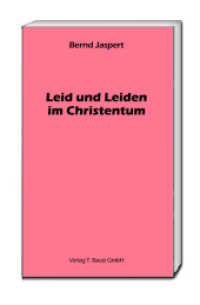- ホーム
- > 洋書
- > 英文書
- > Politics / International Relations
Full Description
The world is becoming more complex, fraught with increasing possibilities for conflict over national rivalries, economic competition, and cultural and ideological fault lines. Understanding a Changing World: Alternative Futures of the International System offers a structured and theoretically grounded way to think about the forces that animate change and the alternative futures they may create.
The existing widely-used textbooks in international relations and global studies do not adequately address this need. At best they offer a concluding chapter on what might come next, usually citing a few key works, most of which are listed below. Some build upon the conventional paradigms of the realist, liberal, or constructivist approaches to extrapolate possible futures. The former approach usually produces a hit-and-miss view of the future, while the latter builds on familiar paradigms which are too general to lead to detailed analysis or specific future scenarios.
Contents
1: Understanding a Changing World: The Future(s) of the International System
Why Future(s)?
What Is an International System?
What Is a Paradigm?
Building Analytic Paradigms and Alternative Futures
Paradigms in the Social Sciences
Realism, Liberalism, and Constructivism
The Four Paradigms
What Comes Next?
2: The Nation-State
Paradigm
The Paradigm
The Possible Futures
A Hegemonic World
A New Balance of Power in a Bipolar or Limited Multipolar World
A Stable Multipolar World
An Unstable Multipolar World
3: The Economic Paradigm
The Paradigm
The Possible Futures
Globalization Advances
Globalization Amended and Reconfigured
Mercantilism 2.0
Toward Autarky, with a Touch of Anarchy
4: The Identity and Culture Paradigm
The Paradigm
The Possible Futures
The Gradual Emergence of a Global Identity and Culture
The Identity and Culture Paradigm Merges with the Nation-State Paradigm
The Creation of an International System Based on the "Clash of Civilizations"
5: The Ideology Paradigm
The Paradigm
The Possible Futures
A Universalistic and Humanistic Ideology Emerges
Ideological Conflict Reemerges
"National Ideology" Becomes the Dominant Fusion of National Identity and Ideology
Populism Becomes the Dominant Paradigm
Sources of Stability and Instability
What Would a Populist World Look Like?
6: Where Do You Go from Here?
What Have You Learned?
How Many Alternative Futures Have We Created?
How Can You Use This Framework?
Index
About the Author







